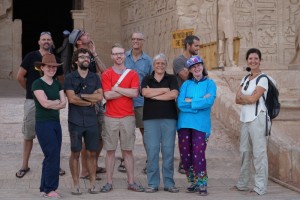26 Days from Cairo to Khartoum: Day 1 – 6- Cairo, Alexandria, Port Said & Monastery of Saint Anthony
Day 1 October 22 Saturday: Cairo – Egyptian Museum
I have been travelling with Dragoman for over five months in West Africa, South and Central Americas and Central Asia. This time, the tour began at 10am in the hotel lobby when the group met for the first time. Our truck is ‘Xara’ (i.e. Sara) and Ryan from Ireland and Dutchie from the Netherlands, our expedition leaders, will be driving it all the way to Cape Town. There are 17 participants on the Cairo-Khartoum leg (five from Australia – Jane, Janice, Alan, Ben and Simon; four from the UK- Barbara, Maddy, Mathew and Steward; three from the Netherlands – Lotte, Rik and Rinske; three from USA – Alexis, Jason and Carol; Nadia from S Africa and myself). Janice, Simon, Mathew, Steward, Lotte, Rik, Rinske and Nadia will go all the way to Cape Town. We have a wide age-gap: the oldest participant is 75 while the youngest is 25. But all the participants look energetic and ready for the life on a truck!
As soon as Ryan had checked our passport, insurance and visas etc, we were ready for action. Accompanied by a local guide, we took the metro to the Egyptian Museum at the Tahrir Square. The entrance fee is E₤75. I paid E₤50 for photography. It has an extensive collection of ancient Egyptian antiquities and some 120,000 invaluable items. I visited the museum in 1979 but left with a poor impression owing to bad lighting and lack of illustration.
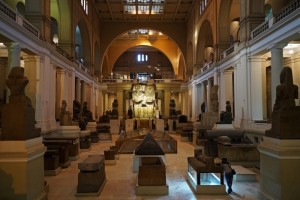 |
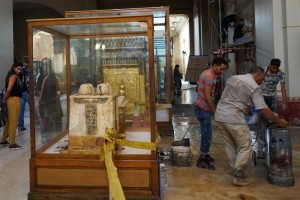 |
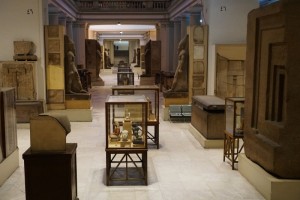 |
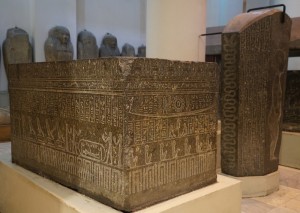 |
Today, the explanations by our guide enable me to appreciate the ancient history of Egypt and recognise some of the most important Pharaohs. Their busts and statutes are on display. After spending two hours with our guide, I spent another hour and a half on my own till 5pm. But the lighting though slightly improved, is still poor and the illustrations are inadequate or unavailable. Hence, I find the museum more like a warehouse with dull display of excellent exhibits. A new museum near the pyramids is under construction. I hope it will provide a better setting for these invaluable treasures.
 |
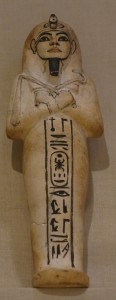 |
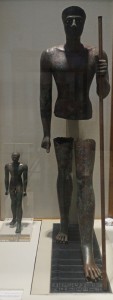 |
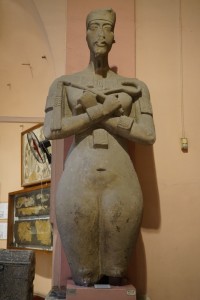 |
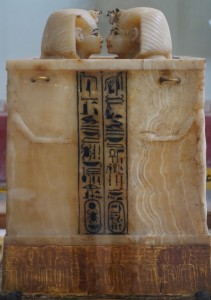 |
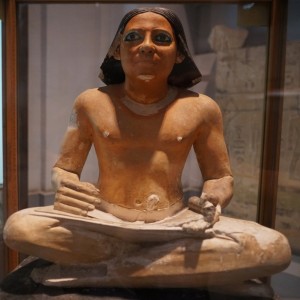 |
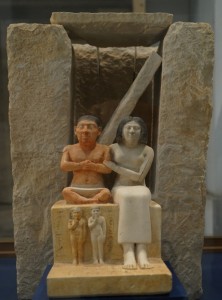 |
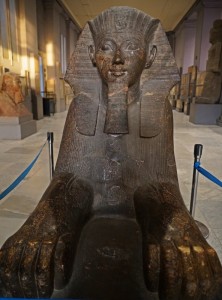 |
I walked back to the hotel and joined my truck mates for dinner. Ryan took us to a restaurant nearby. There were many locals drinking and smoking. It’s nice and cool in the evening and the atmosphere was good. But the food was average. I shared a room with Rinske and went to bed after dinner while Rinske joined others for a beer in the roof-top bar. I was fast asleep and did not hear her coming into the room. I had an excellent sleep!
Day 2 October 23 Sunday: Cairo – Pyramids
Pyramids are one of the Seven Wonders of the Ancient World. Today, we spent the whole day with our local guide visiting the iconic pyramids and Memphis, the capital of the Old Kingdom.
First stop – Saqqara (30km south of Cairo), a vast burial ground covering an area of around 7km by 1.5km, serving as the necropolis for Memphis. High officials also added private funeral monuments to this necropolis.
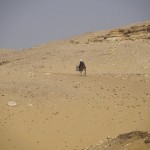 |
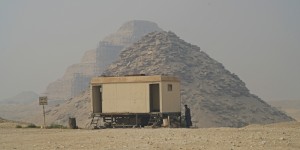 |
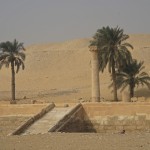 |
We first visited Ti’s tomb (c.2400 BC) which has well-preserved paintings on the wall. Ti, a high-status official during the 5th Dynasty, oversaw the construction of pyramids and temples. We visited three small tombs of noblemen which were covered with paintings showing their daily life.
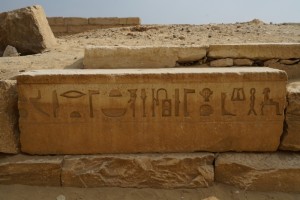 |
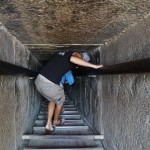 |
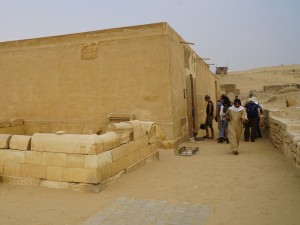 |
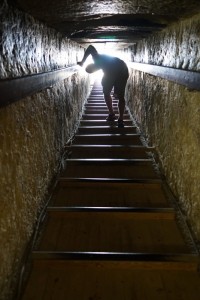 |
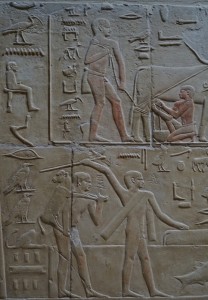 |
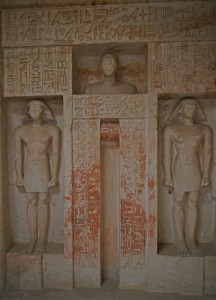 |
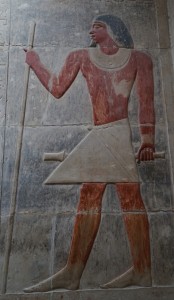 |
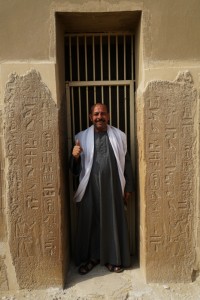 |
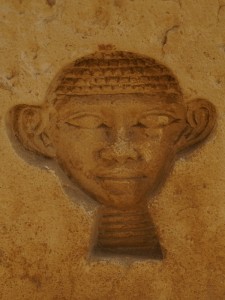 |
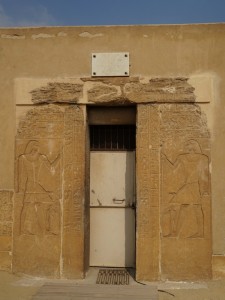 |
Finally we had a photo stop at the world – famous Stepped pyramid of Djoser built in the 27th century BC during the Third Dynasty. We entered through an impressive structure with colossal columns inside. Imhotep (c.2650-2600 BC), the architect of the pyramid, was a polymath who served as chancellor under King Djoser and a high priest. He is also considered by some as the earliest known architect, engineer and physician in history.
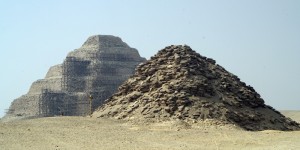 |
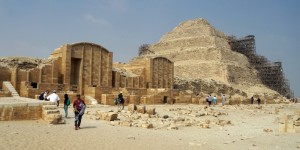 |
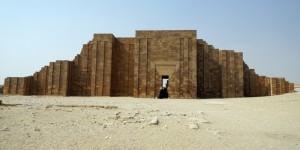 |
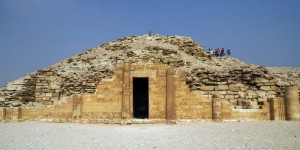 |
Second stop – Mit Rahina Museum (20km south of Giza) with a limestone colossus of Ramses II (c.1303-1213 BC) who reigned from 1279 to 1213 BC as the third Pharaoh of the 19th Dynasty. Known as Ramses the Great, he is often regarded as the greatest and most celebrated and powerful pharaoh of the Egyptian Empire who built extensively throughout Egypt and Nubia.
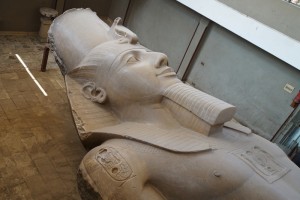 |
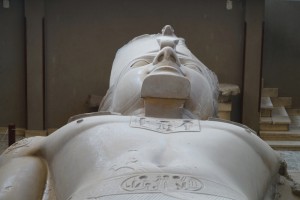 |
Third Stop – Giza Pyramid Complex
The complex consists of the Great Pyramid of Giza (also known as Pyramid of Cheops or Khufu (c. 2560-2540 BC), Pyramid of Afresh (or Chephren) and Pyramid of Menkaure (or Mykerinos), the Great Sphinx, smaller “queens” pyramids, two mortuary temples in honour of Khufu (one close to the pyramid and one near the Nile), three smaller pyramids for Khufu’s wifves, an even smaller “satellite” pyramid, a raised causeways connecting the two temples and small mastaba tombs surrounding the pyramids of nobles.
The Great Pyramid initially measuring 146.5m high was believed to be built as a tomb over a 10-20 year period concluding around 2560 BC. Originally it was covered by casing stones that formed a smooth outer surface. Today the pyramid is 138.8m high and 230.4m at the base and visitors can see the underlying core structure with some of the casting stones around the base. There are three known chambers inside. The lower chamber was unfinished while the chambers of the Queen and King are higher up within the pyramid structure.
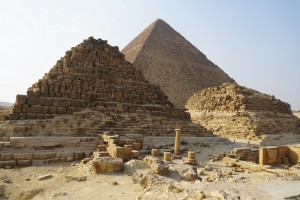 |
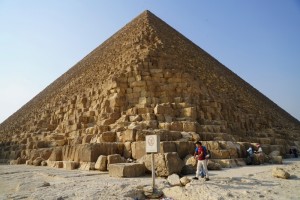 |
On my first visit to Cairo in 1979, I climbed the steep, narrow, hot and stuffy staircase to see the King’s Chamber in August. It was an unpleasant experience as it was crowded and I could hardly breathe. Hence, I went to the Solar Boat Museum constructed in 1985 (entrance fee: E₤60). This Khufu boat measuring 43.6m long and 5.9m, is the world’s oldest intact boat largely built with Lebanon cedar around 2500 BC. It had been dissembled around the funeral rites into 1224 small pieces before buried near the pyramids near the boat pit. I am impressed by this 4500-year old boat which has been magnificently restored.
We then went to a lookout point for a panoramic view of the three large and three small pyramids. Unfortunately, the impressive sight was spoilt by power lines and cars!
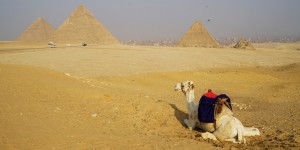 |
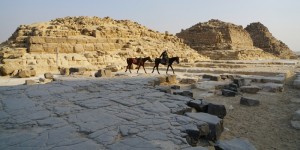 |
The Great Sphinx, a mythical creature with the head of a man and the body of a lion, is an icon and emblem of Egypt. Cut from the bedrock, the statute measures 73m long from paw to tail and 20.21m high from base to the top of the head and 19m wide at its rear haunches. It is the oldest known monumental sculpture in Egypt and commonly believed to have been built by the Pharaoh Khafre (reign: c. 2558-2532 BC). The face of the Sphinx is generally believed to represent the pharaoh.
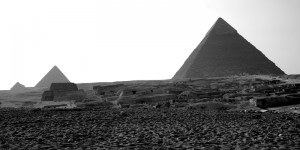 |
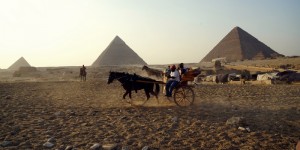 |
We were back in the hotel at 5pm. I took Simon and Rinske to the restaurant where I had kofu. We had a delicious and juicy grilled chicken, fresh salad and rice. The dinner for three only cost me E₤78. Unbelievably cheap!
Day 3 October 24 Monday: Cairo – Alexandria
Our overland journey finally began. Xara which has just been fitted out in the UK, looks brand new and ready for her maiden journey across the continent. We loaded our bags quickly and set off at 9am. As we were going out of the city, we had no problem with the traffic and were soon driving along the Desert Road. I saw many new developments including malls, residential blocks and a cluster of modern buildings relating to the IT industry.
After a pleasant drive, we arrived at El Alamain Military Museum (105km from Alexandria) at 12:30pm. Inaugurated in 1965 to commemorate the El Alamin Battle and the battles of Africa in WWII, the museum has interesting displays showing different forces of the countries participating in the battles. In the garden, there are some 20 tankers, jet planes, surveillance vehicles etc. The entrance fee of E₤50 was well spent.
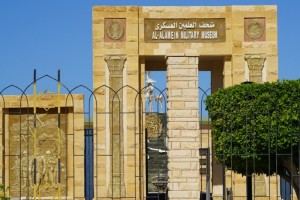 |
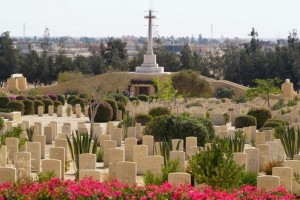 |
We had a nice surprise: the staff arranged us to see the sub-terrain command post of the English army which is normally not open to the public. Then we walked some 500m to reach the Commonwealth Cemetery where some 7,200 soldiers were buried.
We had a quick lunch in El Alamain before heading to Alexandria at 3:30pm. We drove through the delta area and arrived at the Marhaba Hotel after 6pm. I shared a room with Rinske again. She is cheerful, energetic and funny. We had a nice time strolling around the city centre and the market next to our hotel. We saw fresh seafood and meat on one side and stationary in another. An interesting experience.
Day 4 October 25 Tuesday: Free Day in Alexandria
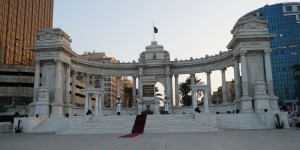 |
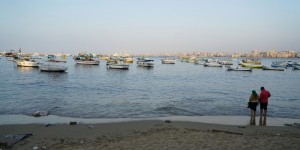 |
Alexandria, the second largest city with a population of about 5 million, was founded by Alexander the Great in 331 BC. It was the capital of Hellenistic and Roman and Byzantine Egypt for almost 1000 years until the Muslim conquests of Egypt in AD 641. It was bests known for the Lighthouse of Alexandria, one of the Seven Wonders of Ancient World and its Great Library (the largest in the ancient world); and the Necropolis, one of the Seven Wonders of the Middle Ages. Extending about 32km along the coast of the Mediterranean Sea, Alexandria is Egypt’s largest seaport and an important industrial centre owing to its natural gas and oil pipelines from Suez.
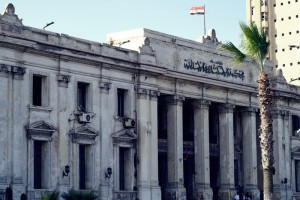 |
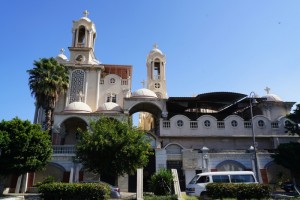 |
After a leisure breakfast, Rinske and I had a great time with the restaurant staff who showed us the roof terrace. We took many photos with them.
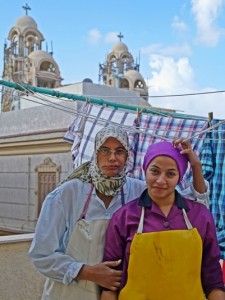 |
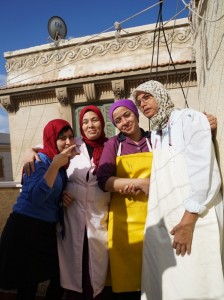 |
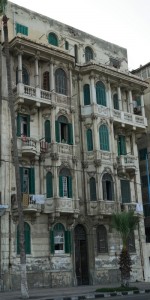 |
I spent the whole day with Rinske and Simon. We decided to start with a visit of the Bibliotheca Alexandrina opened in 2002. We walked along the Corniche which stretches the length of the city. This 16km-long promenade has a distinctly European feel and cosmopolitan character and is one of the best places to watch the sunset over the Mediterranean Sea.
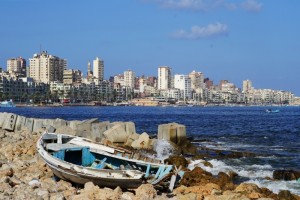 |
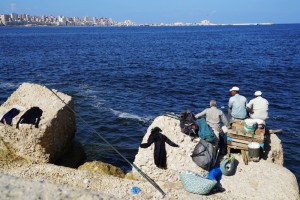 |
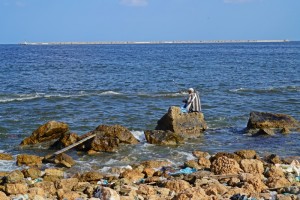 |
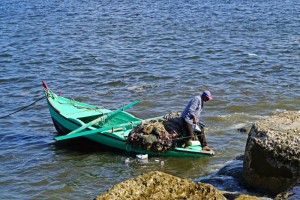 |
We reached our destination at 10:30am only to find the library closed till 11am. As we did not want to waste time, we decided to go to the Alexandria National Museum. We passed the Coptic Cathedral and the cemetery. After spending an hour in this small museum, I find the section on Pharaohs most interesting. Anyway, the small collection in this museum is well-preserved and presented with information in English.
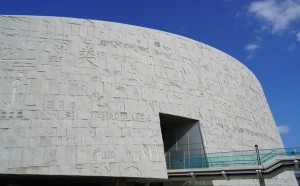 |
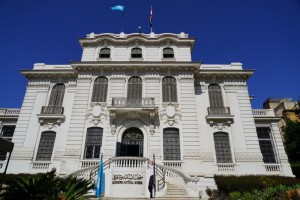 |
By noon, we were heading to the ruins of the Roman Amphitheatre located next to the railway station. On our way, we walked past a street lined with books stalls. I had the best fresh sugar cane juice on this trip (E₤2 for a glass!). We paid an entrance fee of E₤30 and another E₤20 to see the mosaics floors in the Birds’ Villa. Unfortunately, there is no information about the site and its history. Excavation is still ongoing. We are surprised to see many statutes and pillars from the Hellenistic and Roman period that have been found in the bottom of the harbour and moved to this site.
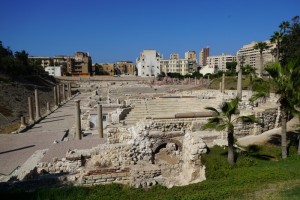 |
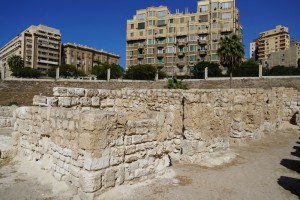 |
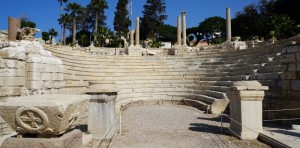 |
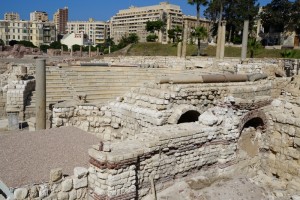 |
After a quick lunch, we took a taxi to the Citadel of Qaitbey which is said to sit on the site of Ptolemy II’s legendary lighthouse, built in 238 BC on an island that was connected to the mainland by Alexander the Great. When the lighthouse fell in a 14th century earthquake, Sultan Al-Ashraf Sayf al-Din Qa’it Bay built the citadel on the same site in 1477. The views over Alexandria from here are impressive.
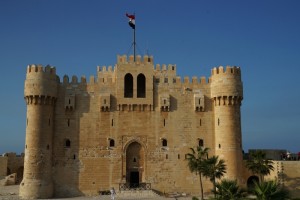 |
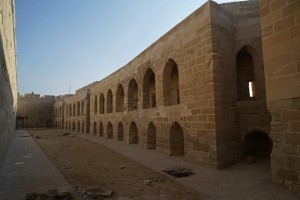 |
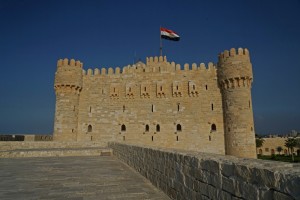 |
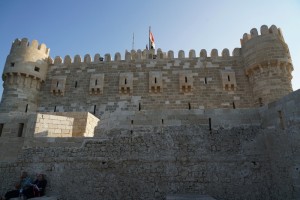 |
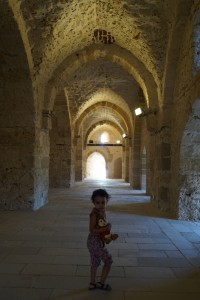 |
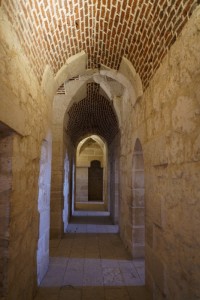 |
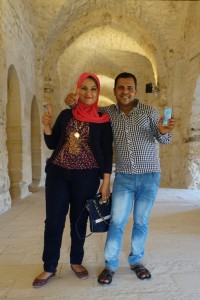 |
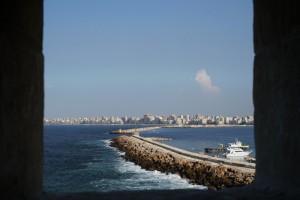 |
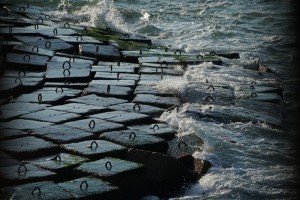 |
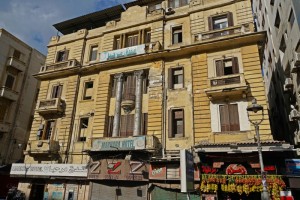 When the fort closed at 5pm, we started to walk along the Corniche to the centre. Two locals had recommended Shanban a seafood restaurant to us which is close to our hotel. Rinske and I had seafood soup, half a kilo of shrimps and two sea beams for E₤220 (E₤110 each). Then we found a bottle shop by chance and brought 26 cans of beer (13 cans each) which lasted us for the whole journey. We paid E₤13 for each can. Great value!
When the fort closed at 5pm, we started to walk along the Corniche to the centre. Two locals had recommended Shanban a seafood restaurant to us which is close to our hotel. Rinske and I had seafood soup, half a kilo of shrimps and two sea beams for E₤220 (E₤110 each). Then we found a bottle shop by chance and brought 26 cans of beer (13 cans each) which lasted us for the whole journey. We paid E₤13 for each can. Great value!
I had a nice and busy day. The only place I miss is Abu Mena, a World Heritage Site, located south of the city of Alexandria with the tomb of the Martyr Menas of Alexandria and the church, basilica, monastery and homes built in its immediate vicinity. Constructed from the 3rd century AD, it grew as a pilgrimage destination for early Christians in the 5th and 6th centuries AD.
Day 5 October 26 Wednesday: Alexandria – Port Said
We sat off just before 8am. We drove along the delta region and reached the Delapost Hotel in Port Said around 1:30pm. Today I shared a room with Jane who is artistic and energetic: she always has a notebook in her hand and sits down to draw the people, the place or anything that catches her attention. She sends it to her grandchildren to keep them inform about her journey.
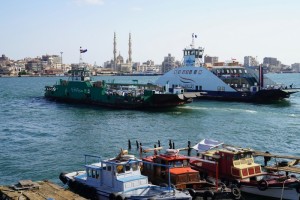 Port Said established in 1859 during the building of the Suez Canal was once a rich and cosmopolitan city with a distinctive look with numerous old houses with grand balconies on all floors. But the city’s heyday has gone: today this fifth largest city in Egypt with a population of over 600,000 looks worn out with many dilapidated grand old buildings. Port Said’s twin city is Port Fuad lying on the eastern bank of the canal on the Asian side.
Port Said established in 1859 during the building of the Suez Canal was once a rich and cosmopolitan city with a distinctive look with numerous old houses with grand balconies on all floors. But the city’s heyday has gone: today this fifth largest city in Egypt with a population of over 600,000 looks worn out with many dilapidated grand old buildings. Port Said’s twin city is Port Fuad lying on the eastern bank of the canal on the Asian side.
There is not much to do in Port Said: the main attraction is the 193.3km-long Suez Canal opened in 1869. Rinske, Maddy and I went to see this world-famous canal together. We took the free ferry toPort Fuad which I find lifeless and uninteresting. We took a ferry back to Port Said after wandering around for less than half an hour.
Next, we walked along the terrace along the canal toward the sea as far as we could. When we could go no further, we had to take another road towards the beach on the Mediterranean Sea coast. On our way to the point where the canal meets the sea, we were stopped by the Police/security personnel while locals were able to enter the area. We were told not to take photos while the locals took photos with their phones. We could not understand what’s going on!
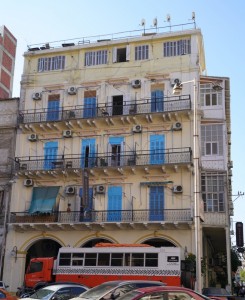 |
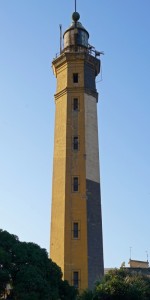 |
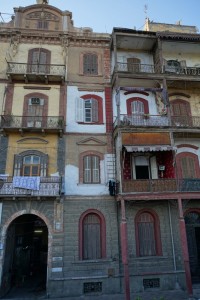 |
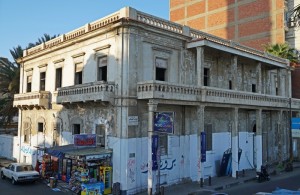 |
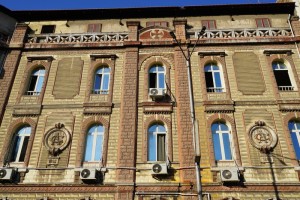 |
We soon ran into Simon and Alan who were having coffee in a street side cafe. As I wanted to watch sunset, I walked on my own for another hour while Rinske and Maddy stayed behind for a cup of coffee. But sunset was not as gorgeous as I had imagined. In the evening, I joined Rinske, Maddy, Jane, Alan and Simon for dinner at Elborg, an excellent seafood restaurant next to the beach. I had grilled mullet and three shrimps for about E₤90. I changed some money and got E₤12 for US$1 (the official rate was still below E₤9).
Day 6 October 27 Thursday: Port Said – Zafarana
We were back on the road at 8 am driving along the Canal which is shielded off public sight by high walls. I did not have any clear view of the canal nor the scenery along the canal till we reached the Red Sea. One thing that strikes me is the strong presence of the military along the road: I guess one barrack every one to three kilometres. Of course, no photography of check-points and the military is permitted. Though Egypt is not at war, the visible presence of check-points and barracks along this sensitive stretch of land does not give me a sense of peace. Is the country prepared for foreign or internal terrorist attacks?
Suddenly, we had torrential rain before a lunch break at Sokuran, a gigantic resort. I went to the supermarket and got a tin of sardines, yogurt and almond milk for E₤30 and had a picnic lunch on the beach. It is interesting to watch fully dressed Muslim ladies swimming and enjoying watersports. They seem to have fun!
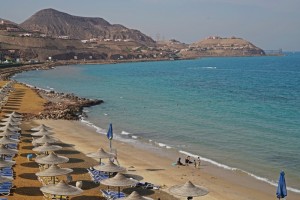 |
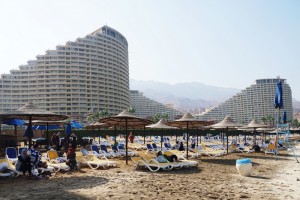 |
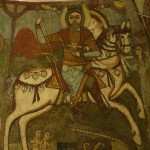 We left at 1:45 pm for the Monastery of Saint Anthony, a Coptic Orthodox monastery standing in an oasis in the Eastern Desert. We had heavy showers along the way. Just before turning off the main road, we found the traffic came to a halt at Mobil station. We were told that the flash floods had damaged the highway ahead and the road was closed. After hanging around for half an hour near the Mobil station, our leaders discovered that the side road leading to the monastery was not closed. Hence, we could continue our journey and finally arrived at the monastery at 4pm.
We left at 1:45 pm for the Monastery of Saint Anthony, a Coptic Orthodox monastery standing in an oasis in the Eastern Desert. We had heavy showers along the way. Just before turning off the main road, we found the traffic came to a halt at Mobil station. We were told that the flash floods had damaged the highway ahead and the road was closed. After hanging around for half an hour near the Mobil station, our leaders discovered that the side road leading to the monastery was not closed. Hence, we could continue our journey and finally arrived at the monastery at 4pm.
One of the world’s oldest monasteries, it was established by the followers of Saint Anthony (c251-356) who is considered to be the first Christian monk (also known as Father of All Monks). The saint ventured into the Eastern Desert at the age of 34 to seek a life of humility, solitude and spiritual reflection. The monastery built in 361-3 has become a pilgrimage site.
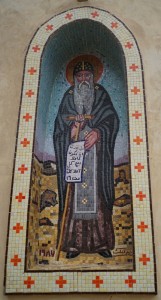 |
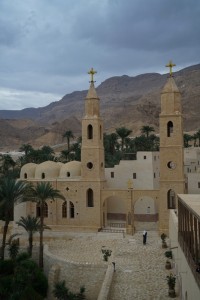 |
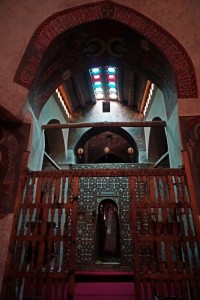 |
The modern monastery all surrounded by high walls (like a fortress) is a self-contained village with gardens, a mill, a bakery and five churches (Medieval Church of St Anthony (12th century), the Church of the Apostles (a monks’ cell dating 4th century has been found underneath the church), the Church of St Mark the Ascetic (15th century), the Church of the Virgin Mary and the Church of St Michael). The oldest paintings in the monastery date to the 7th-8th centuries while the newest date to the 13th century. The cave where the saint lived as a hermit is located at 680m above the Red Sea level and 2km from the monastery. Location of his grave remains a mystery.
We had a quick tour of a cluster of churches (I did not even know their names!) According to our guide, a monk who speaks good English, there are over 90 monks in the monastery with many working overseas. He showed us many relics. I am most impressed by the fresco paintings some of which were discovered during restoration. The colours are vivid and the figures have their distinctive styles. There is too much to see and I find it impossible to appreciate the icons, the paintings and learn about each of the five churches in an hour.
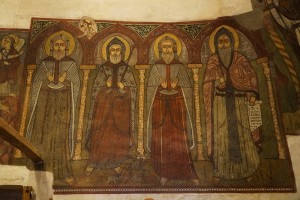 |
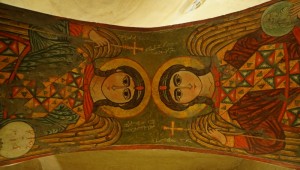 |
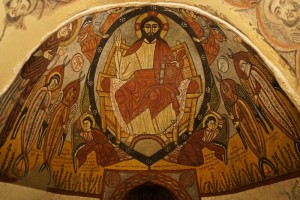 |
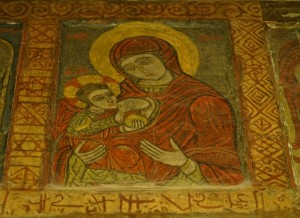 |
We also had a quick tour of the complex stopping at the mill, the spring water and the rustic but atmospheric dining hall. Then we climbed up the wall for a panoramic view of the complex and the Eastern Desert. We saw a pulley that gave access to the monastery (I presume in case of attack). The views are awesome. It was dark when we left the monastery.
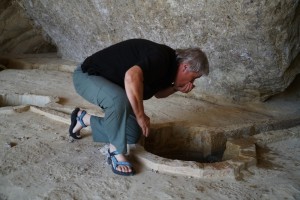 |
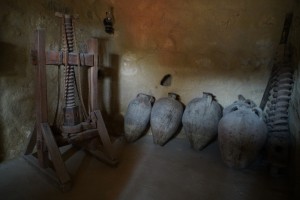 |
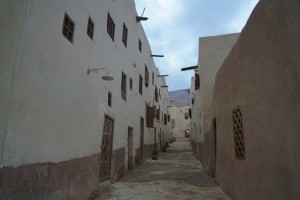 |
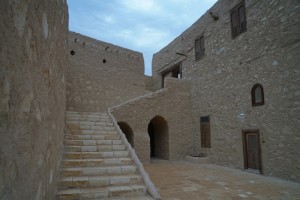 |
The original plan was to spend a night at the guesthouse of Monastery of St Paul, another World Heritage property. But as the guesthouse was full, Ryan had to find another place to stay along the highway near the Mobil station.
Torrential rain was pouring down when we arrived at the station. The highway remained closed with more trucks and cars clogging up the area. Ryan managed to secure nine rooms in the Sahara Inn next to the station. I was totally wet by the time I reached the inn. The conditions of the rooms in one of the blocks were very poor and dirty. Tonight I shared a room with Jane in the main block above the restaurant. Our room which is actually the room of the manager, is not too bad: it has a shower and toilet with water! Anyway, we were thankful to have a roof when many travellers had to spend the night in their vehicle or on the long-distance bus.



